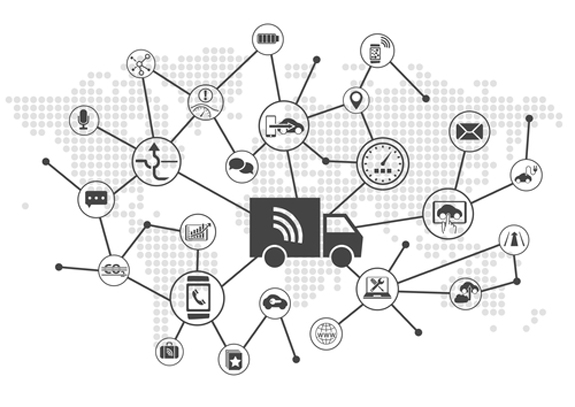How Will Self-Driving Trucks Transform the Trucking Industry?

By: Tommy Ruke
Picture this: You’re driving along on the highway and glance up at an 18-wheeler. There’s no one in the cab.
It may sound like science fiction, but the capacities of autonomous systems are accelerating rapidly, alongside their numbers—and heavy-duty trucks are no exception.
In October 2016, a Class 8 tractor and its trailer from Otto Transportation loaded up 51,744 cans of beer and traveled from Fort Collins to Colorado Springs. Although a professional driver was on board, the truck made 120 miles of the historic journey in full autonomous mode.
The driver controlled the truck from the point of origin onto the highway, but engaged the self-driving technology once he was on the highway, then left the driver’s seat and monitored the technology from the sleeper portion of the cab. He didn’t take control again until two hours later as the truck prepared to exit.
Automation is making the business of driving trucks for a living less grim and demanding. It’s still not an easy job, but the increasing prevalence of active safety systems for braking, lane departure and following distance means drivers are more likely to avoid accidents and return home safely.
Moving forward, what’s the trajectory of autonomous truck development? How will it impact the trucking industry and, eventually, the trucking insurance market?
Coming Soon
For starters, “autonomous” is not quite the right word. It suggests Class 8 trucks without drivers, and that’s 20-30 years down the road, or maybe more. Driver assistance through automation is the real new frontier, and that’s stuff as mundane as turn signals that cancel automatically when a turn is complete.
Automated manual transmissions, adaptive cruise control and anti-rollover systems, while not as exotic, are more complex. But broad development of these systems will only make them cheaper. So far, most of these systems have been put to use based on not government mandates, but rather consumer demand.
Two-truck platoons with drivers steering in both vehicles will come next, but two trucks could become three or four. A system comparable to autopilot for jet aircraft has been floated for long-haul solo drivers—not to displace them, but to make the journey less draining. The integration of various safety technologies on the Otto truck—sophisticated radar, laser light sensors and cameras—points to clear safety benefits and potential for reducing crashes and highway fatalities.
Why won’t completely driverless trucks happen anytime soon? First, the public is not comfortable seeing an 80,000-pound driverless truck traveling next to them on the highway. While the systems may function exceptionally well, we’ve all experienced plenty of instances in our own lives where computerized systems fail.
Autonomous system technologies will only continue to improve, but the next challenge is figuring out how to keep these sensitive systems fully functional when the same trucks are operating on all types of roadways and terrains and in various weather conditions for more than 100,000 miles per year.
The government has also stepped in. Last year, the Department of Transportation released the first federal guidelines for testing and deploying autonomous vehicles. The 15-point safety assessment provides automated vehicle performance guidance for manufacturers, developers and other organizations. The assessment process is intended to set clear expectations for manufacturers developing and deploying automated vehicle technologies.
Insurance Implications
All the research suggests that autonomous technology will help drivers, reduce crashes, keep trucking businesses in compliance and save money. But we don’t know yet if all that is true.
Those in the trucking industry often ask, “What’s the profile of a good risk?” Currently, the answer is based on past loss history, safety ratings as reported by the Federal Motor Carrier Safety Administration, insured drivers’ motor vehicle records and how long the insured has been in business. But these questions are also important: What percentage of the insured’s drivers have been with the insured longer than a year? And what is the insured doing to keep their drivers?
For example, does the insured motor carrier provide more time at home, Bose seats, XM radio, auxiliary power units for televisions and electronics charging, and automatic transmissions? What technology have they added to their equipment? Collision mitigation systems, electronic stability control, lane departure warning systems, adaptive cruise control systems, event recorders—all these technologies help prevent crashes, while event recorders can provide video of the eight seconds before and four seconds after a crash in order to establish facts, defend driver actions and assist in monitoring and training drivers.
The more technology a motor carrier uses, the better risk they are to a carrier. In the years ahead, insurance providers will need to encourage these investments, recognize the risk acceptance and pricing considerations involved, and understand the implications for when a loss event occurs.
Tommy Ruke, TRS, CIC, co-founded the Motor Carrier Insurance Education Foundation in 2013 to provide face-to-face presentations, web-based education and other resources for insurance professionals who work with motor carriers.










